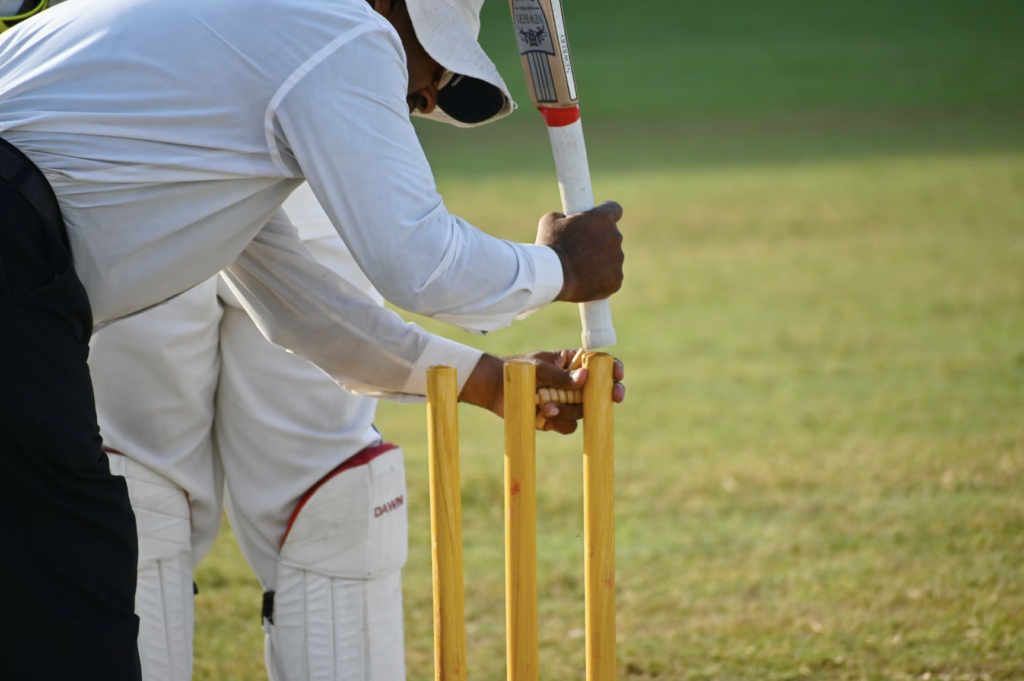Cricket, often hailed as one of the most intriguing and strategic sports in the world, has a unique scoring system that can seem bewildering to newcomers. With its complex rules and intricacies, understanding how scoring in cricket works is essential for anyone looking to appreciate the game fully. In this article, we’ll break down the scoring system in cricket, from the fundamental elements to the more intricate details.
The Basics of Scoring
1. Runs
In cricket, the most basic way to score is by running between the wickets. When a batsman hits the ball and successfully runs to the opposite crease, they score one run. If they manage to run back and forth multiple times, they accumulate more runs.
2. Boundaries
Cricket is known for its boundaries, which include the four and six. When a batsman hits the ball along the ground and it crosses the boundary rope, they score four runs. If the ball sails over the boundary rope on the full, it’s a six, earning the batsman six runs.
The Role of Extras
3. No Balls
When a bowler oversteps the crease while delivering the ball, it’s called a no-ball. The batting team receives one run, and the batsmen can’t be dismissed on a no-ball except for a run-out.
4. Wide Balls
Wides are deliveries that are too far from the batsman’s reach, making it challenging to hit. The batting team is awarded one run, and an extra ball is added to the over.
5. Byes and Leg Byes
If the ball passes the batsman and the wicketkeeper fails to stop it, the batting team can score runs as byes or leg-byes, depending on whether the ball touches the batsman or not.
Understanding the Scoring Methods
6. Runs Off the Bat
The primary way batsmen score is by hitting the ball with the bat. It can result in quick singles, twos, or boundaries, depending on their skill and the fielding team’s tactics.
7. Fielding Errors
Scoring can also happen due to fielding errors. If the fielding team misfields the ball or commits an overthrow, the batting team can earn additional runs.
8. Run-Outs
One of the most dramatic ways to score or get dismissed is through run-outs. If the batsmen attempt a run and the fielding team successfully hits the stumps before they cross, the batsman is out, and no run is scored.
Read Mastering Fielding Positions in Local Cricket
The Role of Bowling
9. Wickets Taken
While it’s not a way to score runs, taking wickets is crucial in cricket. The bowling team aims to dismiss batsmen, which can turn the game in their favor. The more wickets they take, the more they restrict the batting team’s scoring opportunities.
Complex Scenarios
10. Powerplays
In limited-overs formats like One Day Internationals (ODIs) and Twenty20 (T20) matches, there are powerplays, which restrict the fielding placements. Batsmen often target these periods to maximize their scoring.
11. Duckworth-Lewis Method
In rain-affected matches, a unique method called Duckworth-Lewis is used to adjust the target score for the chasing team. Understanding this method is crucial when following shortened games.
Strategy and Tactics
12. Building Innings
In longer formats like Test cricket, building an innings is a strategic approach. Batsmen aim to stay at the crease for extended periods, accumulating runs while preserving wickets.
13. Rotating Strike
Batsmen often rotate the strike, ensuring both partners face deliveries and score runs. This keeps the scoreboard ticking and maintains pressure on the fielding team.
Read Three ways to improve your batting strike rate
14. Tailenders
The lower-order batsmen, often called tailenders, have a role in adding crucial runs. Their ability to support the primary batsmen is pivotal.
15. Strategic Declarations
In Test cricket, teams can declare their innings to give their bowlers a chance to take wickets and win the game. Strategic declarations are a strategic part of the game.
Understanding how scoring works in cricket is essential to fully enjoy this captivating sport. While it may seem intricate at first, as you delve into the game, you’ll find that it adds a layer of excitement and strategy that sets cricket apart. So, next time you watch a cricket match, keep an eye on the scoreboard, and you’ll have a deeper appreciation for the art of scoring in this timeless sport.
Also Read Fundamental Skills of Cricket For Every Aspirational Player
CricHeroes: Your Scoring and League Management Companion
While understanding the scoring in cricket is crucial, keeping track of it during local matches or league games can be a challenge. This is where CricHeroes, the leading cricket scoring and league management app, comes into play.
CricHeroes simplifies the scoring process, making it easy for teams and scorers to maintain accurate records of runs, wickets, and all the details of the game. Whether you’re a player, a coach, or a fan, CricHeroes offers a user-friendly interface that ensures you stay up to date with every run scored and every wicket taken.
With CricHeroes, you can:
- Score Matches: Record every run, boundary, and wicket effortlessly, ensuring that no detail goes unnoticed.
- Manage Leagues: Organize and manage cricket leagues with ease, keeping track of team performances and player statistics.
- Stay Informed: Get real-time updates on ongoing matches, scores, and player performances.
- Connect with the Cricket Community: Join a vast network of cricket enthusiasts, share your love for the game, and stay connected with like-minded individuals.
How to do Cricket Scoring of Any match on CricHeroes – Free Cricket Scorer App
CricHeroes is the ultimate companion for cricket lovers who want to immerse themselves in the world of local cricket scoring and league management. Download the app today and elevate your cricket experience.
Conclusion
Understanding how scoring works in cricket is essential to fully enjoy this captivating sport. While it may seem intricate at first, as you delve into the game, you’ll find that it adds a layer of excitement and strategy that sets cricket apart.
So, next time you watch a cricket match, keep an eye on the scoreboard, and you’ll have a deeper appreciation for the art of scoring in this timeless sport.
FAQs
1. Can a batsman score more than six runs on a single ball?
No, a batsman can score a maximum of six runs on a single ball by hitting a six.
2. What happens if a bowler delivers a ball above the batsman’s waist height?
If the bowler delivers a ball above the batsman’s waist height, it’s called a no-ball, and the batting team gets one run.
3. Is it possible for a match to end in a draw?
Yes, in Test cricket, matches can end in a draw if neither team wins within the allotted time.
4. How is the winner determined in limited-overs cricket if the scores are tied?
In limited-overs cricket, if the scores are tied, the winner is usually decided by a super over, a one-over per side contest.
5. What is the highest individual score ever recorded in a cricket match?
The highest individual score in international cricket is 264, achieved by Rohit Sharma in a One Day International (ODI) match.
6. How many wickets is all out?
In cricket, a team is considered “all out” when they have lost all their ten wickets.
7. How many runs is equal to one wicket?
In cricket, one wicket does not equal a specific number of runs. Wickets represent the number of batsmen dismissed, while runs are the points scored by the batting team. The number of runs associated with each wicket varies based on the match situation.
8. How many overs is the ashes?
The Ashes is a Test cricket series played between England and Australia. In Test matches, there is no fixed limit on the number of overs. Each team is allocated 90 overs per day in a Test match, and the duration of the game can extend up to five days.
9. How many wickets do you need to win?
To win a cricket match, a team needs to dismiss all the opposition’s batsmen. In most formats, this means taking ten wickets. However, in some limited-overs formats like T20, a reduced number of wickets may be required due to match-specific rules.
10. How do you work out a cricket score?
A cricket score is calculated by adding up the runs scored by the batting team. Extras, such as no-balls, wides, and byes, are also added to the total. The total score reflects the number of runs the team has scored during their innings.
11. What does “won by 5 wickets” mean?
“Won by 5 wickets” indicates that the victorious team achieved their target with five of their batsmen still not out. It signifies that they successfully chased down the required runs with five wickets in hand.
12. What is a wicket in cricket scoring?
In cricket scoring, a “wicket” refers to the dismissal of a batsman. It occurs when the batsman is out, either by getting bowled, caught, stumped, run out, or leg before wicket (LBW). Each team has ten wickets in an innings, representing the number of chances they have to bat.
I am Dhaval Jain, SEO All-Rounder at CricHeroes.
CricHeroes is an ultimate Cricket Scoring App and the world’s only true Cricket Network. With more than 30 million registered cricketers using CricHeroes to Live Score their Local Cricket Matches and Tournaments, CricHeroes is already the number one Cricket Scoring App in the world!










